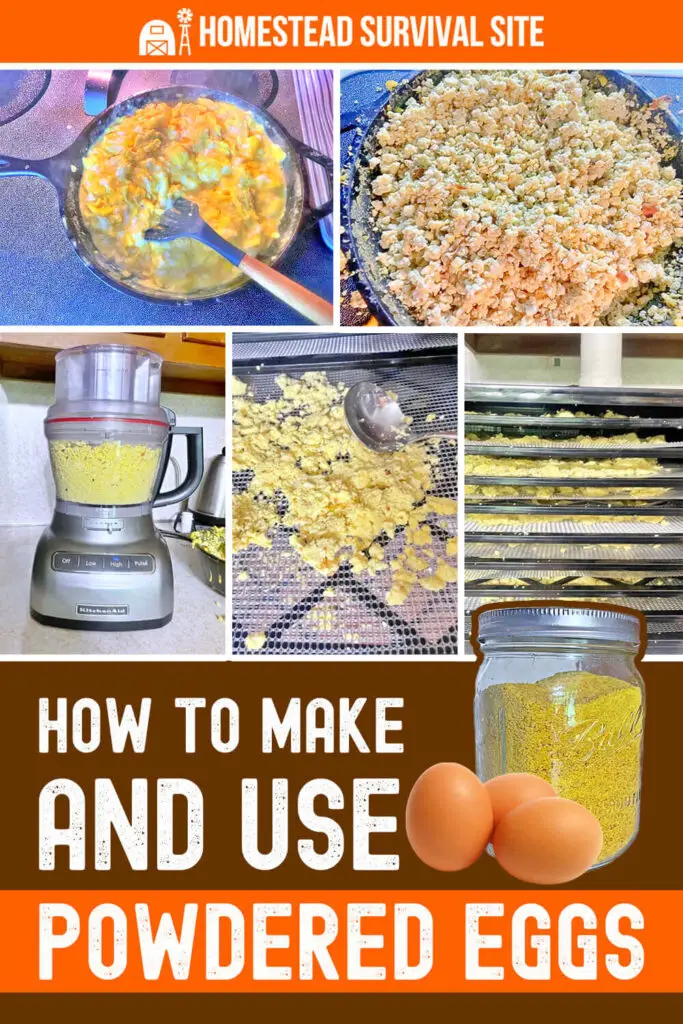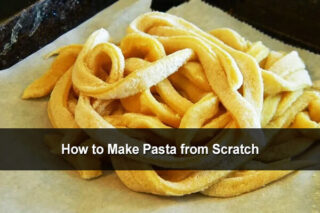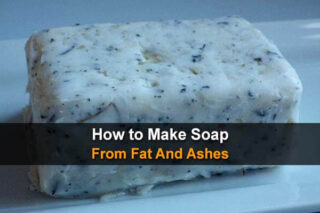Estimated reading time: 8 minutes
Powdered eggs are simply fresh eggs that have been dehydrated and ground into a powder for easy, long-term storage. You can purchase dehydrated and freeze-dried eggs and store them for at least a decade. However, if you have your own chickens, you may want to consider making your own powdered eggs to preserve your egg harvest.
Powdered eggs became popular during the Second World War. Because dried eggs take up so little space but are packed with nutrients, they were shipped to the UK from the United States. Once the war (and food rationing) was over, fresh eggs became more popular and available.
However, many homesteaders and preppers are looking for ways to preserve their egg harvests that will last a long time and take up very little space.
In this article, we’ll take a look at how to make dried eggs, and I’ll show you just how I did it.
Want to save this post for later? Click Here to Pin It On Pinterest!

What About Salmonella?
Infections, such as salmonella, are always a concern when we talk about eggs. And some people will dehydrate their fresh eggs to make egg powder. However, if you want to lower your risk of salmonella, you’ll probably want to cook your eggs first.
Supplies
I used a deep, cast iron skillet, a spatula, and three dozen eggs. I also used a dehydrator and a food processor. After that, you’ll need storage containers. I used a mason jar. You may want to consider packing your dried eggs in mylar bags with an oxygen absorber, but that’s up to you.
The Process
1. Prepare your pan. You’ll want to use some kind of non-stick pan for this project because you don’t add any butter or oil to the eggs. However, if you use a cast iron skillet, like I did, make sure it is well-seasoned.

2. Scramble your eggs. I scrambled the eggs just like I usually would but without any milk, butter, or oil in the pan. I cooked them at medium-high heat.
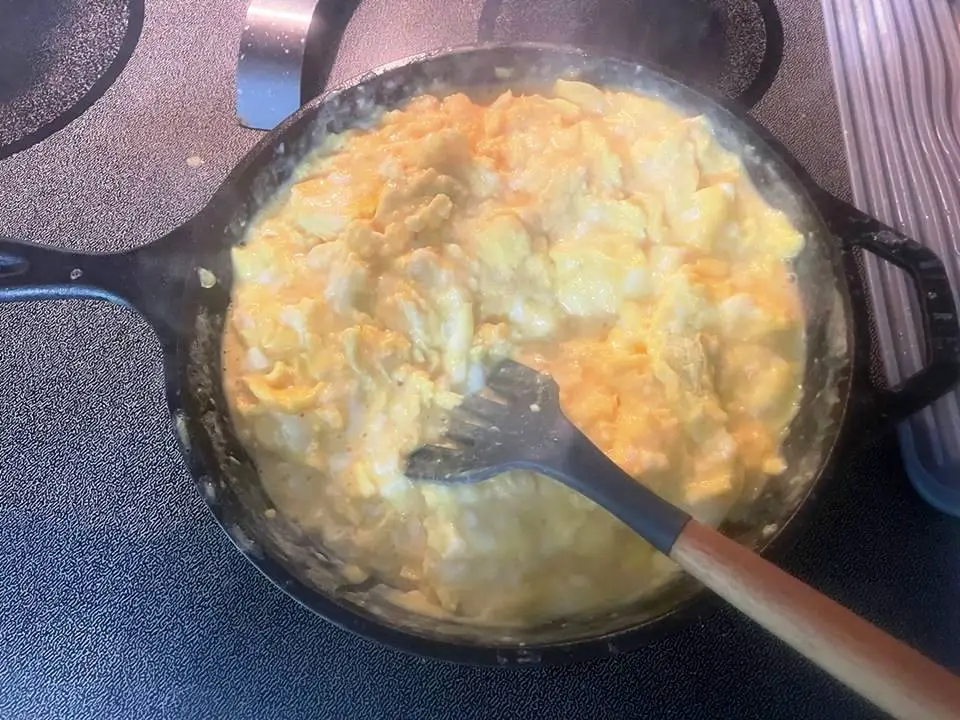
3. Once the eggs are well-cooked, turn the heat down and keep on cooking. You’ll want to use your spatula to continuously scrape, chop, and turn the eggs. Keep your eye on the amount of steam coming out of the eggs – once the steam slows down, you can stop cooking.
The drier you get the eggs in your pan, the less time it will take in the dehydrator. Try to chop them up into as small of bits as possible. They won’t look tasty at all – they’ll have a drier, slightly rubbery texture. Cooking the eggs took about one hour.
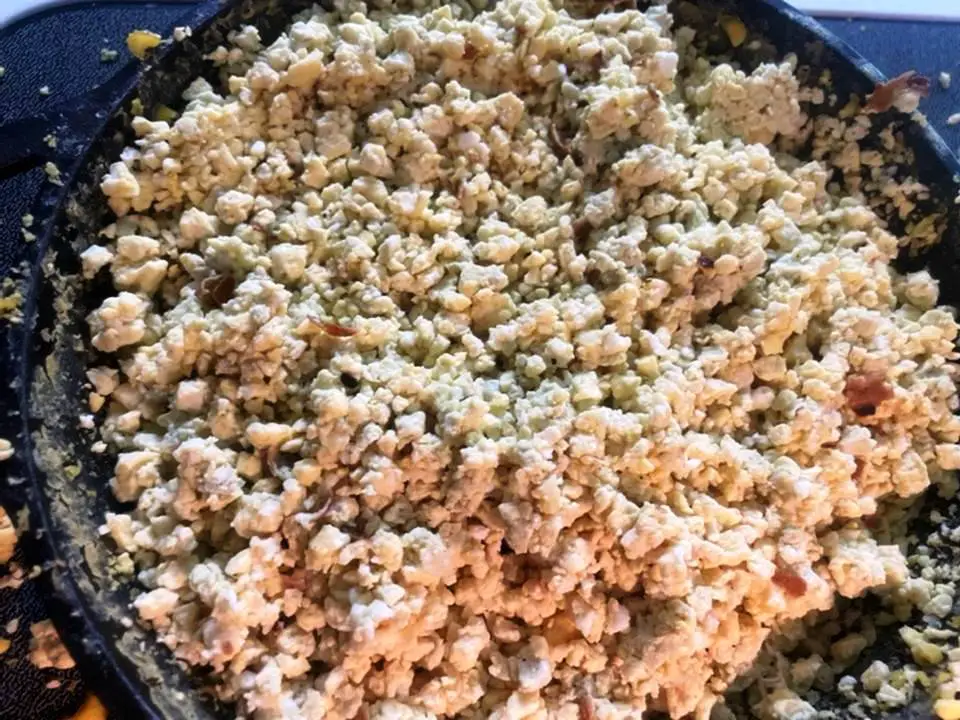
4. Transfer your eggs to your food processor. I filled up my food processor with the eggs and processed them on high until they were like a dry paste.
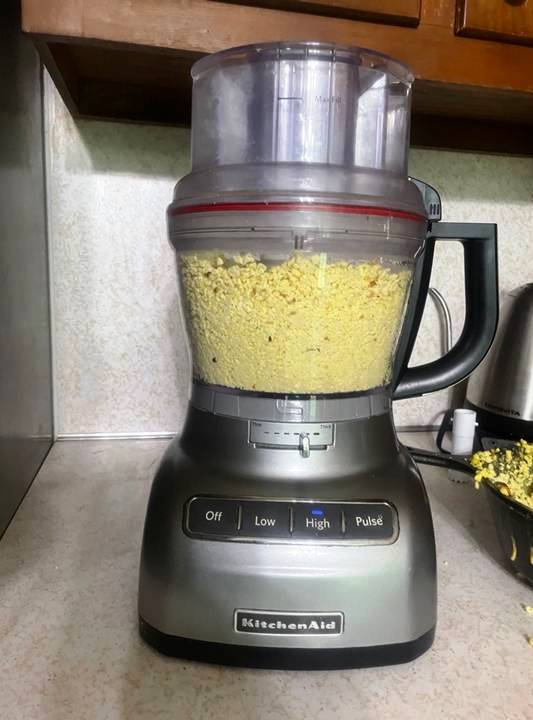
5. Scoop the eggs onto your dehydrator trays. This might get messy! Little bits of egg fell through my trays, so if you have fruit leather inserts, you might want to use them. Spread the eggs out as thin and as wide as possible.
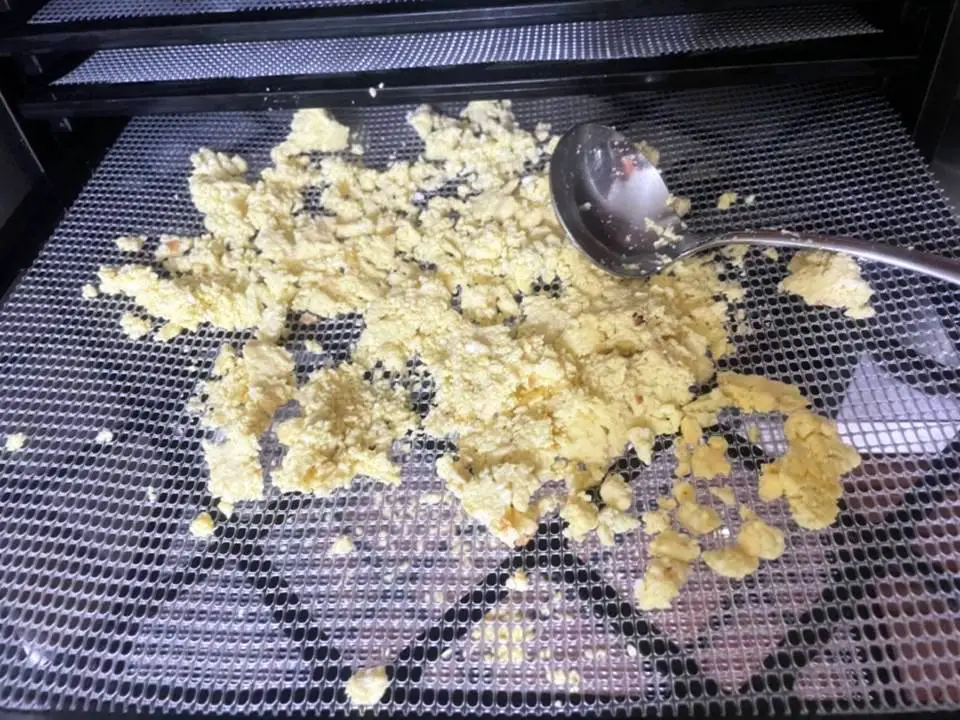
6. Turn the dehydrator to 145 degrees. It will probably take 11 to 15 hours to dehydrate the eggs completely.

7. Check on the eggs every couple of hours to make sure they are drying out well. You’ll know the eggs are completely dry when they are brittle and crumbly. If they bend, they need more time.
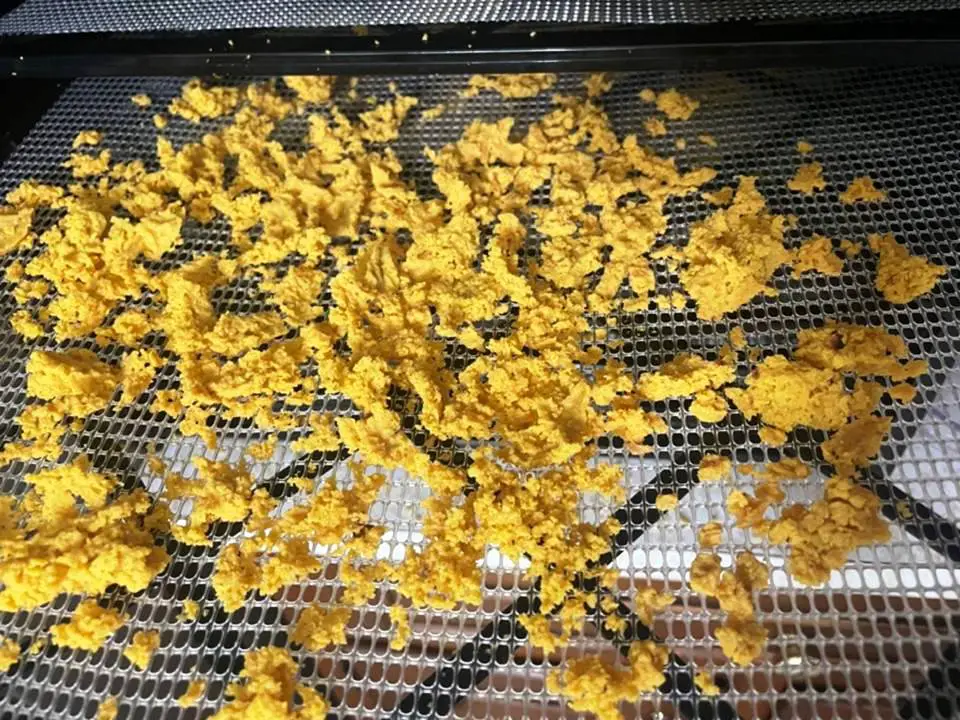
8. Transfer your eggs into your clean and dry food processor. You’ll notice the eggs have reduced a bit since you processed them the first time.
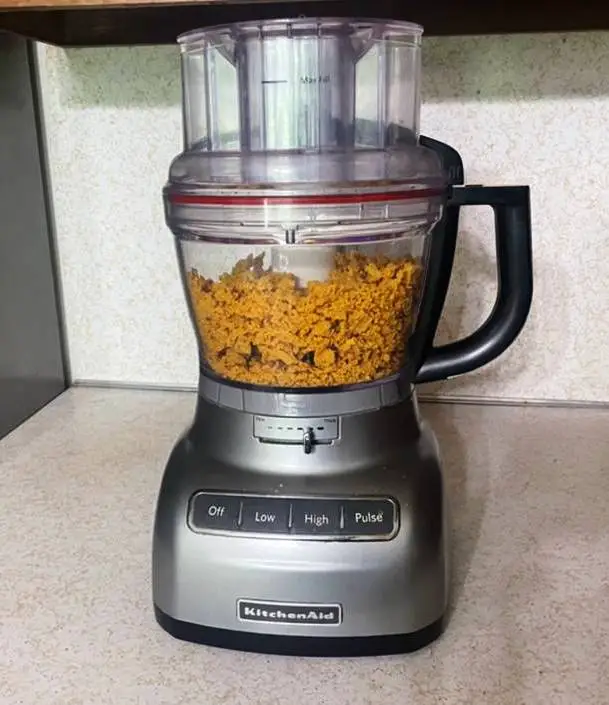
9. Pulse your eggs until they turn into a powder. My eggs were ready when they felt like the consistency of corn meal. The eggs came out dry and gritty.
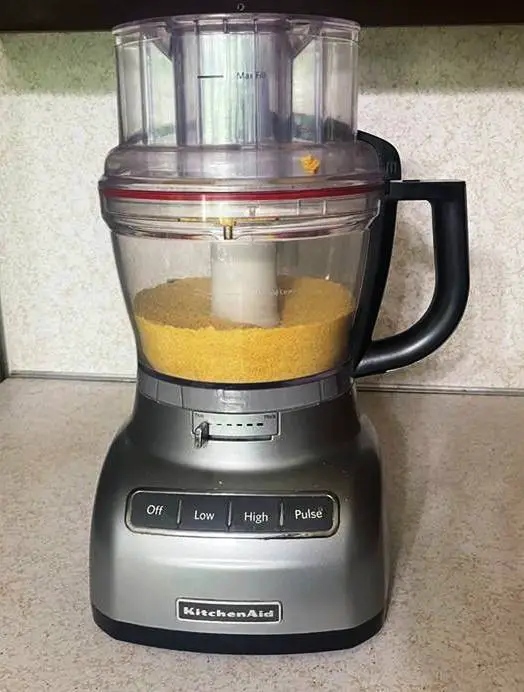
10. Transfer your eggs to your storage containers. 3 dozen fresh eggs reduced down to 1 quart of eggs powder.
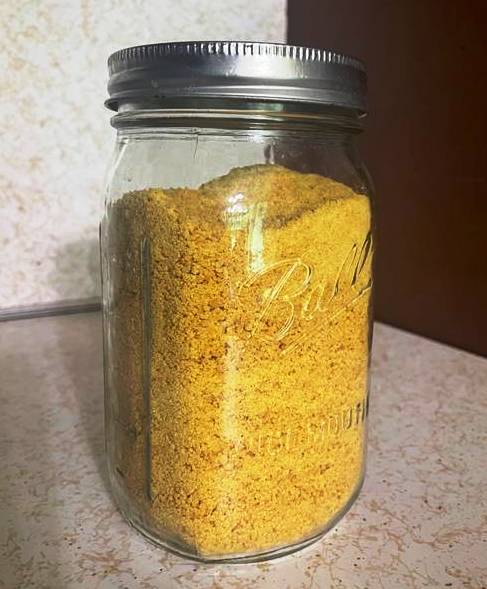
11. Store in a cool, dark place away from moisture and bright light. Check often for mold, mildew, or moisture. Once opened, use within one month.
How to Use Dried Eggs
You can use your dried eggs in baked goods or even make them into scrambled eggs. They’re great for camping, backpacking, or long-term storage.
How to Reconstitute Powdered Eggs
To reconstitute one egg, you need to mix 1 heaping Tablespoon of dried egg powder, 1 tablespoon of cold water, and 1 tablespoon of milk (or another tablespoon of water). Blend well and cook! They won’t have the same texture as a fresh egg, but you can still make deliciously fluffy, scrambled eggs.
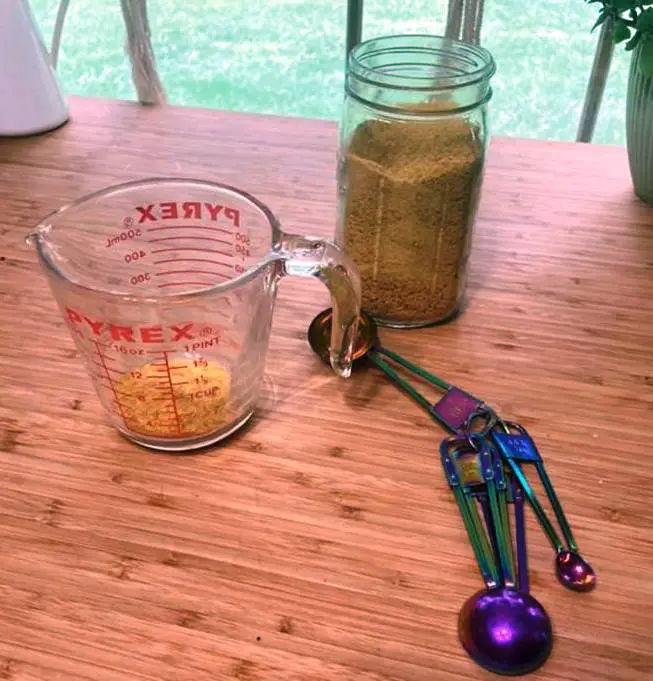
You can reconstitute your eggs using 1 tablespoon of egg powder, 1 tablespoon of milk, and 1 tablespoon of cold water.
Blend very well! I blended mine by hand but a Nutribullet would work even better.
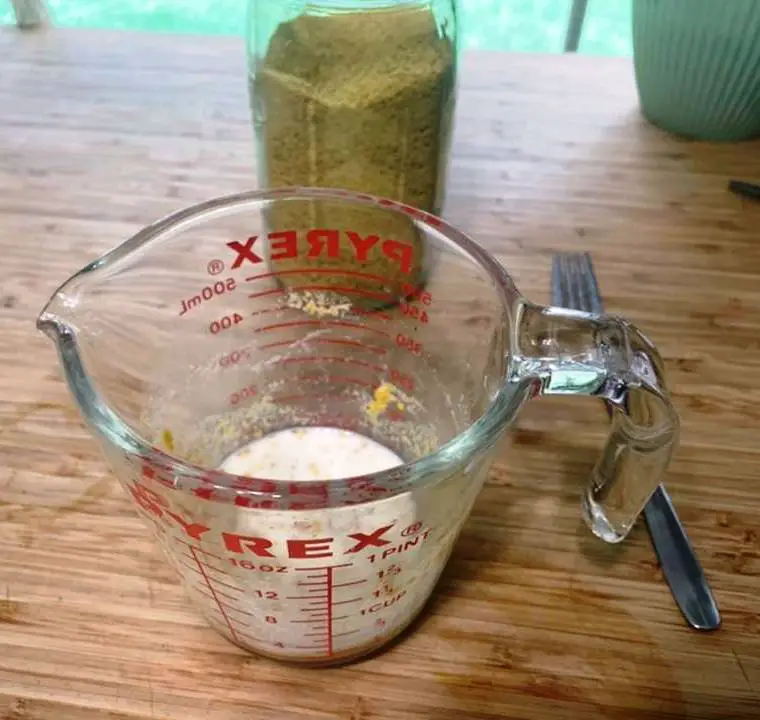
Cook just like you would scramble fresh eggs in a small skillet over medium-high heat. Use a spatula to scrape and turn your eggs until they are cooked thoroughly.
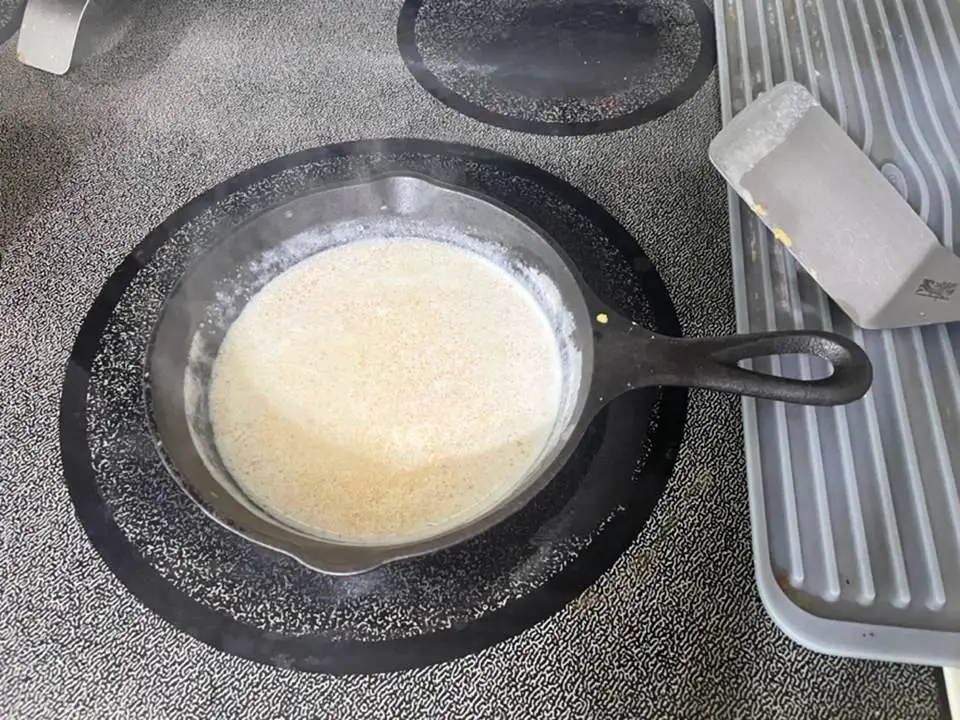
The texture is slightly grainier than traditional scrambled eggs. You might compare them to egg-flavored grits! Serve with whatever fixings you like.
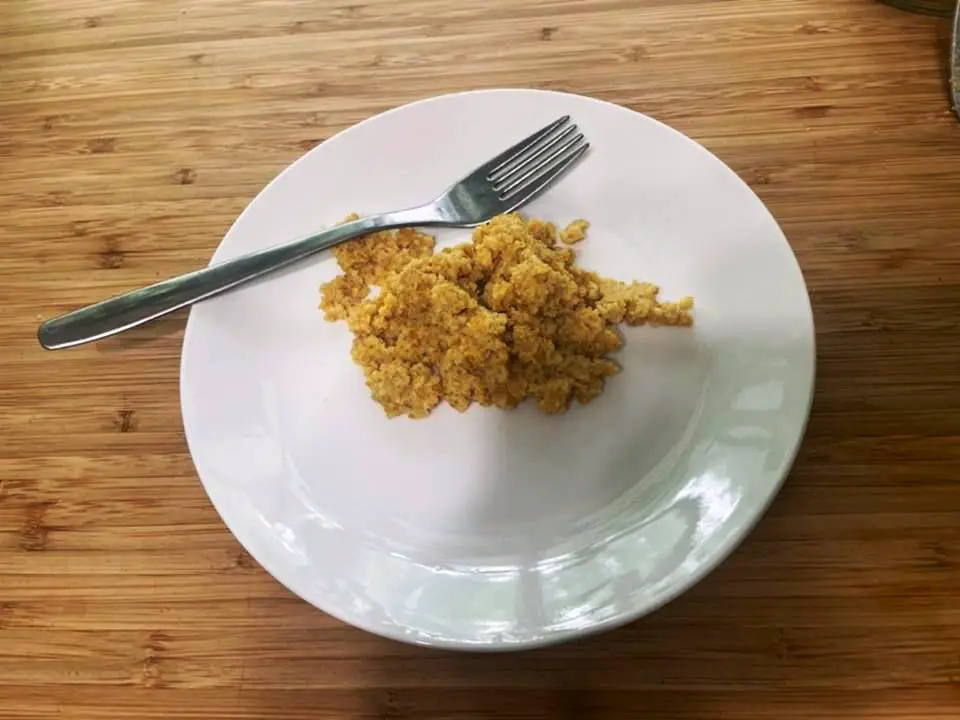
You can also use your reconstituted eggs for casseroles, baking, and most dishes that call for eggs. Keep in mind that these eggs don’t have as much binding power as fresh eggs, so your cakes and breads may be slightly more crumbly but just as delicious!
Like this recipe? Don't Forget to Pin It on Pinterest!

Powdered Eggs
Equipment
- I used a deep, cast iron skillet, a spatula, and three dozen eggs. I also used a dehydrator and a food processor. After that, you’ll need storage containers. I used a mason jar. You may want to consider packing your dried eggs in Mylar bags with an oxygen absorber, but that’s up to you.
Ingredients
- 3 dozen eggs
Instructions
- Prepare your pan. You’ll want to use some kind of non-stick pan for this project because you don’t add any butter or oil to the eggs. However, if you use a cast iron skillet, like I did, make sure it is well-seasoned.
- Scramble your eggs. I scrambled the eggs just like I usually would but without any milk, butter, or oil in the pan. I cooked them at medium-high heat.
- Once the eggs are well-cooked, turn the heat down and keep on cooking. You’ll want to use your spatula to continuously scrape, chop, and turn the eggs. Keep your eye on the amount of steam coming out of the eggs – once the steam slows down, you can stop cooking. The drier you get the eggs in your pan, the less time it will take in the dehydrator. Try to chop them up into as small of bits as possible. They won’t look tasty at all – they’ll have a drier, slightly rubbery texture. Cooking the eggs took about one hour.
- Transfer your eggs to your food processor. I filled up my food processor with the eggs and processed them on high until they were like a dry paste.
- Scoop the eggs onto your dehydrator trays. This might get messy! Little bits of egg fell through my trays, so if you have fruit leather inserts, you might want to use them. Spread the eggs out as thin and as wide as possible.
- Turn the dehydrator to 145 degrees. It will probably take 11 to 15 hours to dehydrate the eggs completely.
- Check on the eggs every couple of hours to make sure they are drying out well. You’ll know the eggs are completely dry when they are brittle and crumbly. If they bend, they need more time.
- Transfer your eggs into your cleanand dry food processor. You’ll notice the eggs have reduced a bit since you processed them the first time.
- Pulse your eggs until they turn into a powder. My eggs were ready when they felt like the consistency of corn meal. The eggs came out dry and gritty.
- Transfer your eggs to your storage containers. 3 dozen fresh eggs reduced down to 1 quart of eggs powder
- Store in a cool, dark place away from moisture and bright light. Check often for mold, mildew, or moisture. Once opened, use within one month.
You May Also Like:



